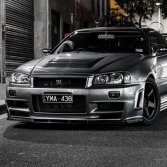E85/eflex And Oil Choice
Announcements
-
Similar Content
-
Latest Posts
-
By joshuaho96 · Posted
I would try messing with friction modifier to see if it smooths it out. Just keep adding more until it stops chattering or grabbing quite so much. If you haven't changed the gear oil in a long time you may as well start there too in case that has anything to do with it. You might want to also verify the initial torque is set to the lowest setting too. Requires popping out one of the CV axles first but that's not too bad. Once you're sure the preload is set to the lowest you can try adding an ounce at a time of friction modifier until it feels right to you. -
It is possibly 55 degrees for the Nismo version. I had a look through the manual and the stocker has a breakaway torque of 2.5 to 3.5kgm. Supposedly the Nismo LSD goes down to 5kgm when worn in but it is pretty grabby even with very little throttle. Worse when cold. So I guess you have three things. 1. Shims. 2 Friction plates 3. Cams Would think shims would be the easiest but Ive no clue how many tenths of a mm shim thickness change equals how many kgm torque. Also not sure if the Nismo friction plates are similar/different to stock or if they are the most of the source of the diff being angry. Think I can write off the Nismo rebuild kit for the standard diff as not being what I want.
-
Yeah, it was a bit of confusion with me, I rang and asked if they had a boot for a soft top, and then the paint shop when they rang and were asked if it had a hard top on it, which it does, just not a PRHT....LOL Meh, whilst frustrating for all concerned it isn't a war stopper and should be a thing of the past in a week or two In other N/A related news, car is booked in at the end of the month for the cams, springs, retainers, harmonic balancer and retune I might even pull the lazy arse card and get them to do a full service on it whilst it is there
-
By joshuaho96 · Posted
Factory LSD is supposedly a 2 way with a very conservative cam. If you've already tried adding friction modifier to the diff oil and it still locks up too much for your liking you might want to adjust the ramp rate on the cam to be more like OEM instead of reducing initial torque even further. People claim the 8 kgf-m disc kit for the OEM LSD is still very streetable but I've never been able to compare everything side by side on my own. -
Oh man, at least it sounds they've accepted they stuffed up and not put it back on you...could see some confusion if they asked if it had a hardtop or not, and you've answered truthfully but maybe not answering their real question which is what roof did it have from the factory! Glad your keeping it N/A 2.5
-








Recommended Posts
Create an account or sign in to comment
You need to be a member in order to leave a comment
Create an account
Sign up for a new account in our community. It's easy!
Register a new accountSign in
Already have an account? Sign in here.
Sign In Now